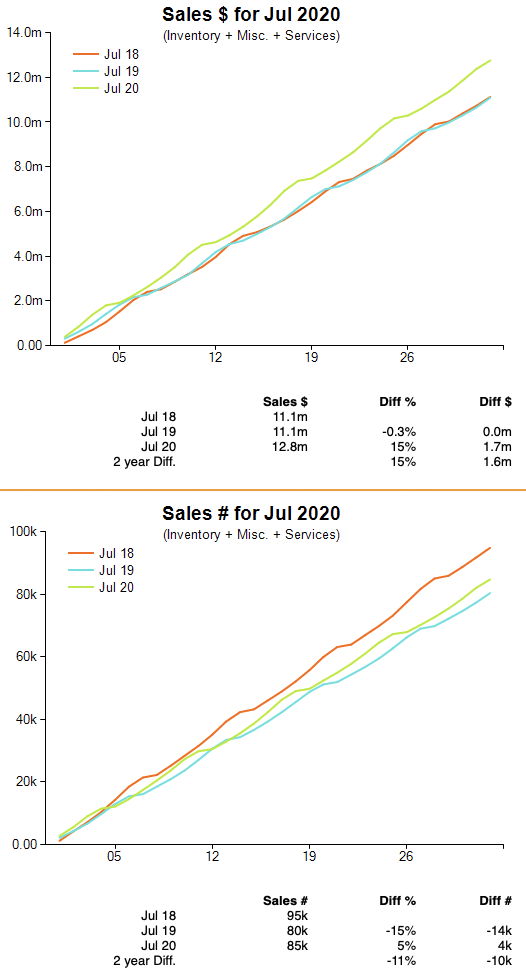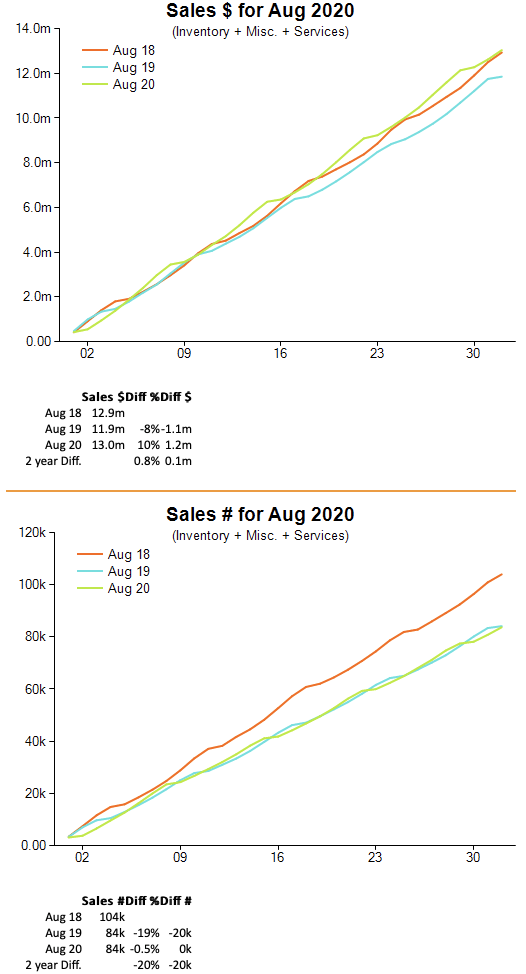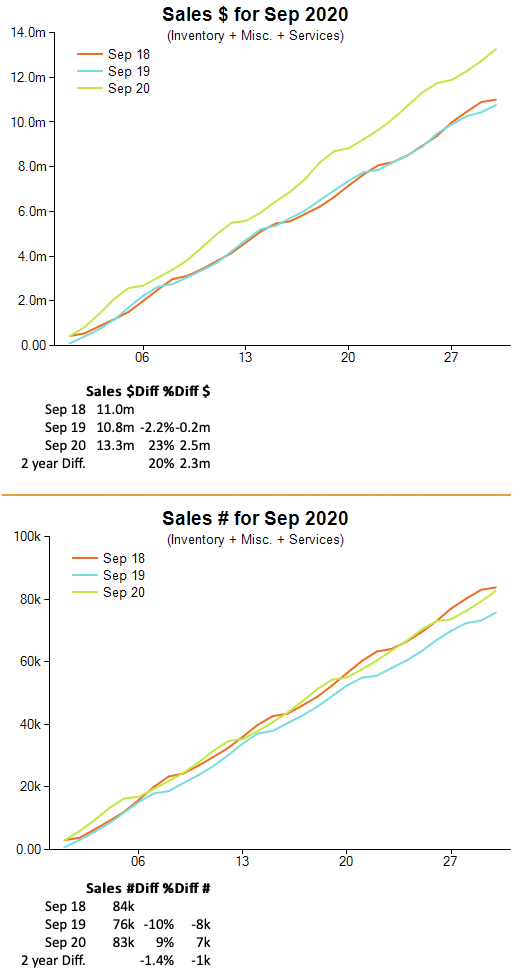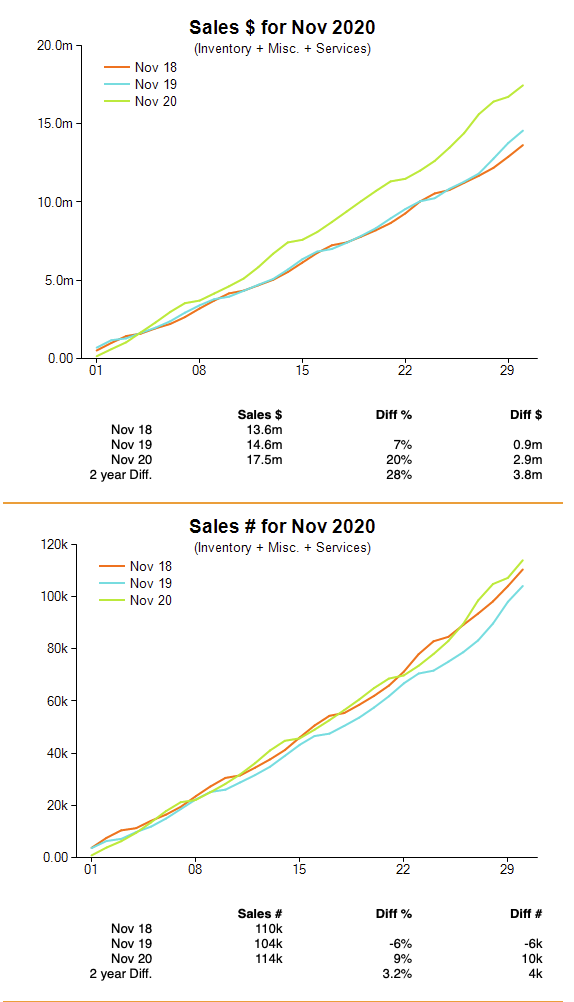Article courtesy Jeweller magazine
Sales reports indicate Australian consumers have embraced jewellery spending over the past four months, with diamond-set pieces the leading product category.
Data compiled by Retail Edge Consultants, a retail management and POS software firm, jewellery sales across products and services increased 20 per cent in November when compared with the same period last year.
The results continue a positive trend which began in July.
Michael Dyer, sales manager at Retail Edge, told Jeweller that several elements of the results were surprising: “Firstly, the volume of growth was quite large, and more importantly it has been quite consistent, taking out one-off factors like the [second] Melbourne CBD shutdown.
“Another thing is the increase in the average ticket value; it hasn’t been $5 or $10 increases – it’s gone up markedly, by 20–25 per cent.”

“It’s like consumers have been let out to get rid of their ‘cabin fever’ – and they’ve done that by buying product, and certainly jewellery has been on their list”
MICHAEL DYER, RETAIL EDGE CONSULTANTS
Colin Pocklington, managing director of Australia’s largest jewellery buying group, Nationwide Jewellers, noted similar trends.
“Most stores experienced reasonable increases on last year’s sales – other than in Victoria of course – for July to September 2020. However, I don’t think anyone anticipated the huge increase in sales in October and November. The average store is up 20 per cent on last year!” he told Jeweller.
“We sensed a shift in orders being placed by members during our digital Pre-Christmas Expo Week at the end of September,” Pocklington added, revealing that the number of members taking up the group’s interest-free supplier finance deal was approximately 50 per cent higher than usual, and total orders placed with preferred suppliers were “up by a similar percentage”.
Dyer partially attributed strong sales to pent-up consumer demand following the COVID-19 lockdowns.
“The analogy I use is that it’s like consumers have been let out to get rid of their ‘cabin fever’ – and they’ve done that by buying product, and certainly jewellery has been on their list of things to buy,” he explained.
“Maybe that’s because times were so challenging and they wanted to buy a lasting memento – rather than something which doesn’t have a long lifetime value – that they can pass on to family members.”
Showcase Jewellers general manager Carson Webb said the buying group had been surprised by the “sheer size of the increases” in sales but noted that it was not entirely unexpected.

“Most stores experienced reasonable increases on last year’s sales for July to September 2020. However, I don’t think anyone anticipated the huge increase in sales in October and November”
COLIN POCKLINGTON, NATIONWIDE JEWELLERS
“We knew the world wasn’t going to end, and that while people weren’t able to travel – and we were able to manage unemployment levels, as a country – they were going to look at local support for businesses and things to spend their money on for loved ones,” he told Jeweller.
Josh Zarb, CEO of Australia’s newest buying group, Independent Jewellers Collective (IJC), noted similar trends across members’ stores.
“Jewellery has been particularly sought after as a genuine treat for consumers, in spite of the pandemic and [because of] the lack of international and domestic travel.
“The majority of our retail partners [members] are located throughout regional Australia, and shopping and staying local has been very strong over the past six months,” he said.
Zarb added that government stimulus packages also had “a very positive impact on retail overall”, leading IJC’s members to strong results.
“We have been extremely pleased and surprised by the sheer volume of trade that our members have been experiencing. In what has been a very traumatic time for some, jewellery overall seems to have done quite well across the board,” he observed.
Pocklington attributed stronger sales to “increased consumer confidence now that the virus is largely suppressed, a large number of Australians who would normally be overseas are spending their money domestically, and continued strong growth in custom design and manufacture”.
Meanwhile, Webb suggested that the pandemic sales illustrate the ongoing appeal of jewellery: “Jewellery has, time and time again, proved very resilient through tough times.”

“Jewellery has, time and time again, proved very resilient through tough times”
CARSON WEBB, SHOWCASE JEWELLERS
Indeed, there are echoes of the period following the Global Financial Crisis (GFC) of 2008–2009, when Jeweller reported: “What began with a roar has ended with something of a whimper, surely disappointing the cavalcade of doomsayers who prophesied catastrophic commercial conditions that were to change Australian retail forever. Luckily, many retailers on our shores escaped relatively unscathed, unlike their overseas cousins.”
Notable trends
According to Retail Edge data, diamond jewellery set in precious metals has been the most successful product category, followed closely by non-gemstone set jewellery – a finding which was echoed by the three buying groups.
At Nationwide, sales of diamond, silver and gold jewellery were strong, alongside services like repairs and custom makes.
Showcase members’ diamond jewellery sales have increased by 26 per cent compared with 2019, while at IJC, Zarb said “most” categories were performing well, particularly diamonds and pink diamonds.
Retail Edge’s Dyer explained that sustained high demand for custom design, as well as Argyle pink diamonds, were strong drivers of performance across the diamond-set jewellery category. Consumers may have been spurred on by the closure of the iconic Argyle Mine in Western Australia, the world’s premier source of pink diamonds, in November.
Dyer also pointed to a consistent increase in earrings and diamond pendant sales – both diamond-set and non-gemstone – over the past four to five months.
“[Earrings are] certainly a go-to piece and I would expect, given the pattern of behaviour and what’s happened most recently, is that trend is highly likely to continue through the December trading period,” Dyer added.
He also noted that men’s watches, including the Maserati, Seiko, and Citizen brands, had “taken a leap forward” in recent months.

“The majority of our retail partners are located throughout regional Australia, and shopping and staying local has been very strong over the past six months”
JOSH ZARB, INDEPENDENT JEWELLERS COLLECTIVE
“There seems to have been significant growth in the average retail price of men’s watches to north of $500, where historically watch volumes were down quite markedly in units,” Dyer explained, adding this likely reflected “saturation in the marketplace of more fashion-trended watches”.
“The growth has been picked up in the average unit sale rather than the quantity of units,” he said.
In the lead-up to Christmas, Dyer emphasised that stock management was crucial for retailers: “Given the supply chain situation [due to COVID-19] – and all sectors are unfortunately subject to that – my sage words of wisdom for December would be that if you run out of stock of top-selling lines, then you need to have a go-to piece, a brother or sister of that item, that you still have in stock. Educate your staff to sell this alternative rather than miss out on the sale altogether.”
Meanwhile, the buying groups advised that members were focused on several key categories for holiday trading.
Zarb said IJC had used Retail Edge’s data to inform the Christmas strategy, explaining, “Our price points feature heavily in the $399–$1,100 range, so the products sit above typical chain-store merchandise. We cover all key areas, but we do have a focus on better, modern coloured-stone products and diamond accessories, which we know are trending now.”
At Nationwide, Pocklington said “diamond jewellery and finishing makes in time for Christmas” were the top priorities, while at Showcase, Webb said, “Diamonds, of course! That’s always been our very strong focus.”
With retailers in the midst of the busiest time of the year, it seems even a global pandemic can’t dampen spirits – or sales.
Note: Jeweller contacted the Leading Edge Group Jewellers buying group for this story but did not receive a response by the time of publication.
2020 Jewellery Retail Sales Results
The charts below are based on data collected via Retail Edge POS software at more than 400 independent Australian jewellery stores from July to November 2020 shows sustained increases in both raw sales value and average unit sale price.
JULY 2020 SALES RESULTS






